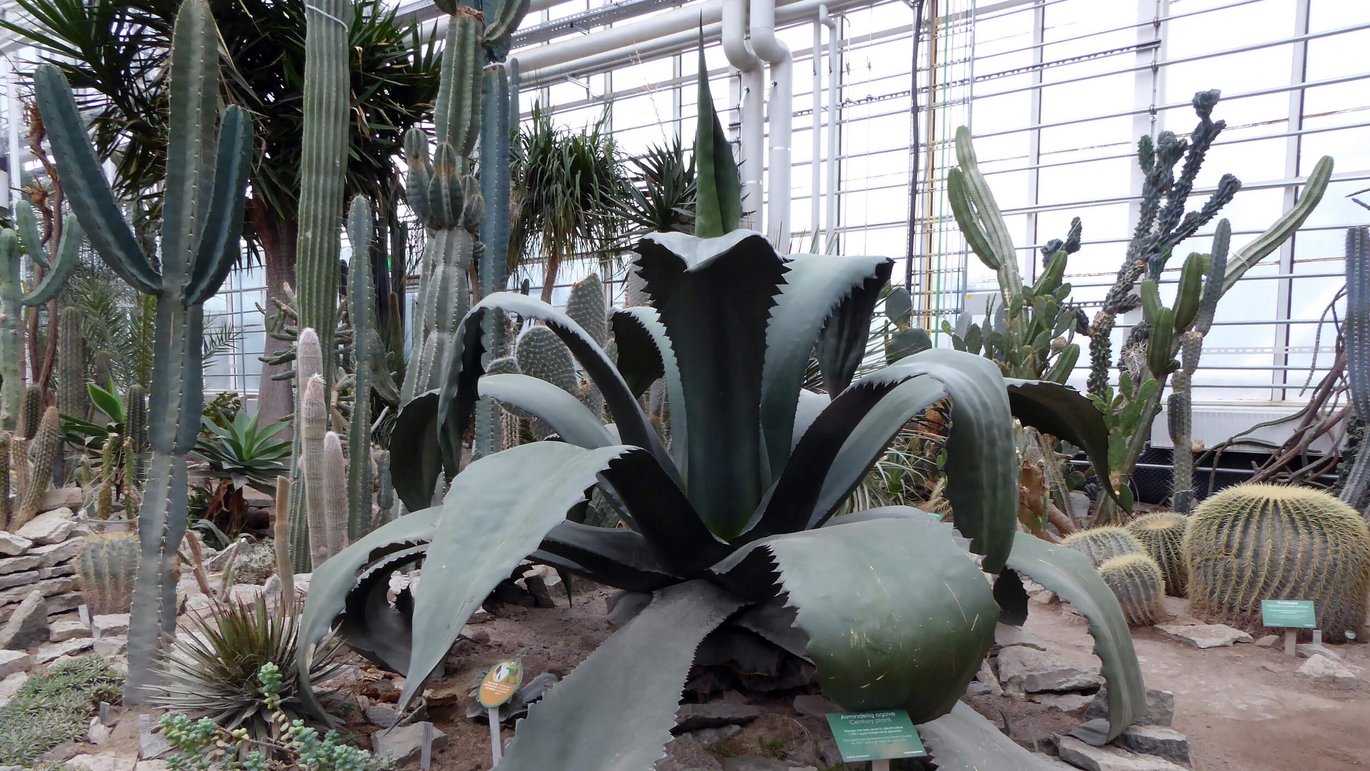Century plant
The century plant is known for flowering only once in its long life — then it dies.

The century plant is adapted to life in dry areas
The century plant is well adapted for life in arid conditions. The plant consists of a rosette of thick, juice-filled leaves. After a rain, water is stored in its leaves which the plant can use during periods of drought.
The life cyclus
Usually, the century plant grows between 10 and 30 years old, and it flowers only once in its lifetime. As it reaches the end of its life, it uses all its enegy to produce a huge inflorescence. The inflorescence can be 8 to 9 m high and is filled with large quantities of yellow flowers. After flowering, the plant dies.
Agave syrup
Agave syrup is produced from the juice of various Agave species including the century plant. The flower stalk is removed prior to flowering and a depression is made in the remaining part of the stem. The plant juice that continue to rise is collected daily from the depression. The juice is rich in sugar and is heated and concentrated to a syrup-like consistency known as agave nectar.
Fact box:
- Greenhouse location: Desert house
- Danish name: Agave
- Latin name: Agave salmiana var. ferox
- Family: Asparagus family / Asparagaceae
- Natural habitat: Mexico and southern USA